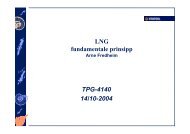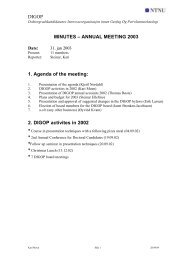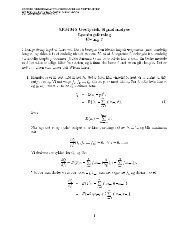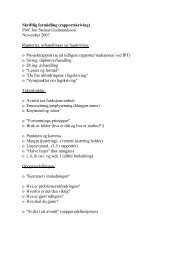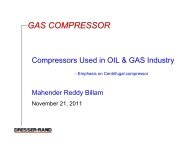paraffin wax deposition and fouling
paraffin wax deposition and fouling
paraffin wax deposition and fouling
Create successful ePaper yourself
Turn your PDF publications into a flip-book with our unique Google optimized e-Paper software.
experienced in other runs by Walker. The st<strong>and</strong>ard deviation from<br />
temperature. See section 7.4 for details. The magnitude of the<br />
waiier(1) was at a high flowrate <strong>and</strong> concentration but a low<br />
tration but decreased with flowrate <strong>and</strong> temperature. Run F38 by<br />
7.6 R<strong>and</strong>om Fluctuations<br />
—o —<br />
The magnitude of the r<strong>and</strong>om fluctuations in the overall heat<br />
r<strong>and</strong>om fluctuations was therefore substantial, about double those<br />
:ndeed, the tube surfaces were observed to be covered with patches.<br />
merefore give rise to r<strong>and</strong>om fluctuations.<br />
establish some average cverage of the tube surface by deposits.<br />
per cent from the <strong>fouling</strong> resistance. The maximum fluctuation in<br />
using the Dittus Boelter equation to evaluate the film resistances.<br />
<strong>fouling</strong> resistance for run F38 was R = 1.7483 (kW/m<br />
2 °c)’ when<br />
the average overall heat transfer resistance R = 2.398? (kW/m<br />
was calculated as 0.1585 (kW/m<br />
The st<strong>and</strong>ard deviation therefore, represents a deviation of 9.1<br />
run F38 from the average overall resistance was found to be<br />
0.3100 (kW/m<br />
The calculations show that the amount of <strong>wax</strong> required to break<br />
down or build up, giving rise to the fluctuations, is typically<br />
10—20 per cent of the average <strong>wax</strong> deposited. It is therefore<br />
The rap rtia_ 3uaup 01 OCO51t5 was not aetectae or.<br />
ny additional buildup or breakdown of <strong>paraffin</strong> <strong>wax</strong> deposits oula<br />
surface. These deposits probably broke down in a short time to<br />
studies, a deposit was rapidly laid down over most of the cola tube<br />
typically only by 2 st<strong>and</strong>ard deviations.<br />
st<strong>and</strong>ard deviations going from minimum to maximum, but more<br />
resistance. The <strong>fouling</strong> resistance therefore changes by about 4<br />
2 oc)_l, representing 17.7 per cent of the <strong>fouling</strong><br />
2 oc)l As shown in section 7. the<br />
2 °C)<br />
anticipated that, at the start of an experiment in the <strong>fouling</strong><br />
transfer resistance in the <strong>fouling</strong> studies, increased with concen




